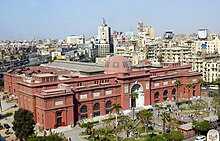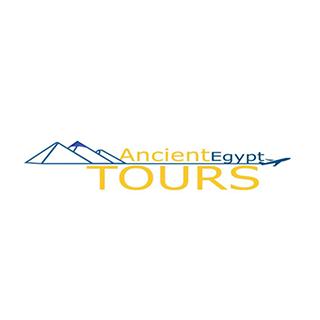About The Egyptian Museum
The Egyptian Museum in Cairo, commonly known as simply the Egyptian Museum (Arabic: المتحف المصري, romanized: al-Matḥaf al-Miṣrī, Egyptian Arabic: el-Matḥaf el-Maṣri), located in Cairo, Egypt, houses the largest collection of Egyptian antiquities in the world. It houses over 120,000 items, with a representative amount on display. Located in a building built in 1901, it is the Largest Museum in Africa. Among its masterpieces are Pharaoh Tutankhamun’s treasure, including its iconic gold burial mask, widely considered one of the best-known works of art in the world and a prominent symbol of ancient Egypt.
|
المتحف المصري
|
|

|
History
The Egyptian Museum of Antiquities contains many important pieces of ancient Egyptian history. In addition, it houses the world’s largest collection of Pharaonic antiquities. The Egyptian government established the museum built in 1835 near the Ezbekieh Garden and later moved to the Cairo Citadel. In 1855, Archduke Maximilian of Austria was given all of the artifacts by the Egyptian government. These are now in the Kunsthistorisches Museum, Vienna.
A new museum was established at Boulaq in 1858 in a former warehouse, following the foundation of the new Antiquities Department under the direction of Auguste Mariette. The building lay on the bank of the Nile River, and in 1878 it suffered significant damage owing to the flooding of the Nile River. In 1891, the collections moved to a former royal palace, in the Giza district of Cairo. They remained there until 1902 when they were moved again to the current museum in Tahrir Square, built by the Italian company of Giuseppe Garozzo and Francesco Zaffrani to a design by the French architect Marcel Dourgnon

Sale Room for Antiquities
The Department of Antiquities operated a sale room (Salle de ventes) in the Egyptian Museum in Cairo from 1902 . Where original ancient Egyptian artworks and other original artefacts people sold them. In addition, until the 1970s. Dealers or collectors could bring antiquities to the Cairo Museum for inspection on Thursdays, and if museum officials had no objections, they could pack them in ready-made boxes, have them sealed and cleared for export.In addition, Many objects now held in private collections or public museums originated here. Finally,after years of debate about the strategy for selling the antiquities,people closed the sale room in November 1979.




Comment (0)